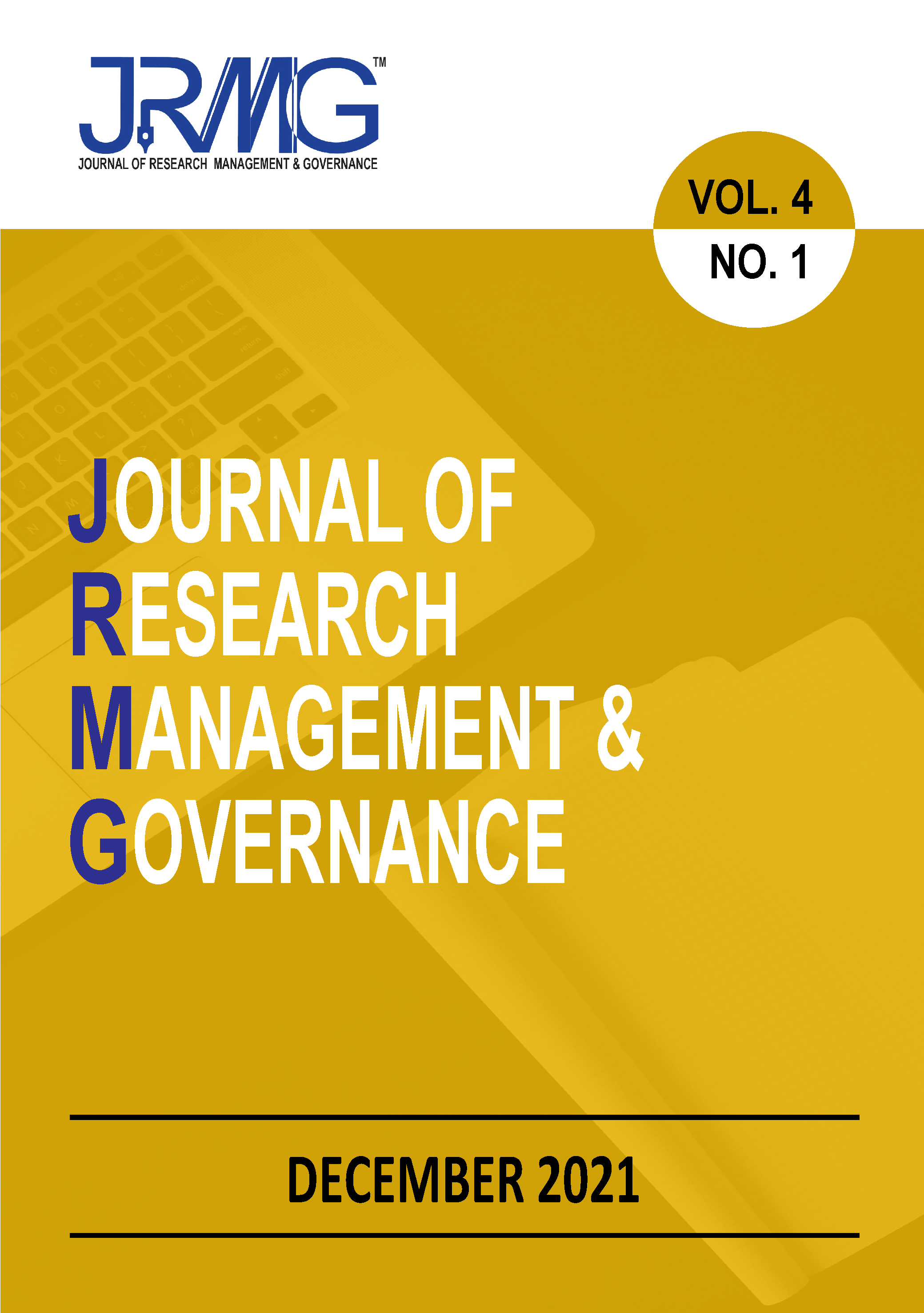Enhancing Research Mechanisms and Institutional Processes in Malaysia: A Case Study of Universiti Malaya (UM)
Main Article Content
Abstract
Malaysia’s research and development landscape has grown tremendously over the last decade. The growth of scholarly output in Malaysia has also risen significantly compared to countries such as China, Singapore and Australia. Malaysia has made it a target that research output and quality will increase through an expenditure of 1.3% of the GDP allocated to Research and Development (R&D). Thus far, Malaysia has achieved phenomenal growth within the research sector, with a four-fold increase in the number of citations and has generated approximately RM1.25 billion through 11% yearly growth in the number of patents from Malaysian Universities. This case study aims to provide, firstly, an overview of research governance in Malaysia, and secondly, a discussion of research governance practices at Universiti Malaya (UM). Data is obtained from the 11th Malaysian Plan (2016-2020) and linked to the Malaysian Transformation Program. The Malaysian Education Blueprint for Higher Education (2015-2025) launched in 2015 also outlined a comprehensive transformation for research in higher education programmes. In addition, other published documents on research governance practices by agencies providing research funding were also reviewed. This case study highlights best practices in research management and governance to strengthen and further enhance the current research management and governance in support of the Malaysian government’s initiative towards achieving a high-income nation status.
Downloads
Article Details

This work is licensed under a Creative Commons Attribution-NoDerivatives 4.0 International License.
Articles submitted to the journal should not have been published before in their current or substantially similar form, or be under consideration for publication elsewhere. Authors submitting articles for publication warrant that the work is not an infringement of any existing copyright and will indemnify the publisher against any breach of such warranty. For ease of dissemination and to ensure proper policing of use, papers and contributions become the legal copyright of the publisher unless otherwise agreed. By submitting a manuscript, the author(s) agree that copyright for the article is transferred to the publisher, if and when the manuscript is accepted for publication. However, it can be reprinted with a proper acknowledgement that it was published in JRMG.

This work is licensed under a Creative Commons Attribution-NonCommercial-NoDerivatives 4.0 International License.
